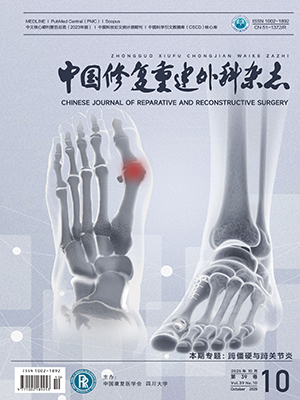Citation: 钟洲, 刘熹, 张晖, 裴福兴, 黄富国, 屠重棋, 岑石强, 周宗科, 康鹏德, 易敏, 黄强. 地震挤压综合征迟发性肌肉坏死的临床研究. Chinese Journal of Reparative and Reconstructive Surgery, 2014, 28(10): 1317-1319. doi: 10.7507/1002-1892.20140284 Copy
Copyright © the editorial department of Chinese Journal of Reparative and Reconstructive Surgery of West China Medical Publisher. All rights reserved
-
Previous Article
APPLICATION OF PLATELET-RICH PLASMA IN CLINICAL ORTHOPEDICS -
Next Article
自体游离体“瓶塞法”治疗膝剥脱性骨软骨炎并软骨下囊肿一例




